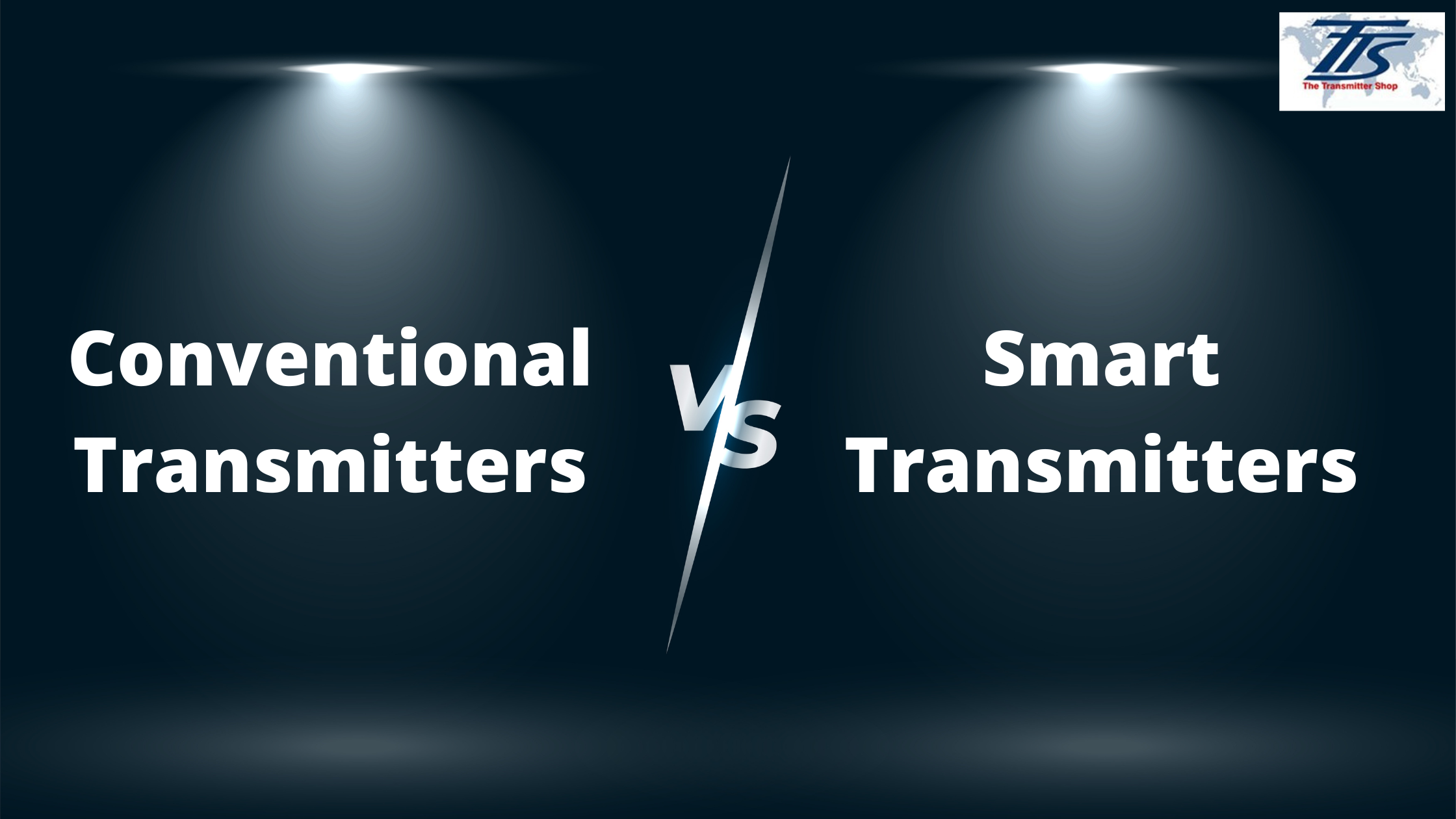Blog
Difference in Conventional Transmitters and Smart Transmitters
Difference in Conventional Transmitters and Smart Transmitters
March 27, 2020
Transmitters are used to measure variables in industrial applications. Even if conventional transmitters were working just fine, various industrial applications demand precision, performance, and reliability. Therefore, smart transmitters have gained significance in recent years. This post helps you understand the difference between conventional and smart transmitters, and what makes smart transmitters a better option.
A General Introduction to conventional and smart transmitters
In order to compare conventional transmitters and smart transmitters, it is essential to study them individually. Let’s define both components individually.
Conventional Transmitters:
A conventional transmitter is a set of electronic elements that are used for transmitting the signal in the form of electromagnetic waves. In these transmitters, the operator can only deal with process variable signals, since a 4-20 mA range of transmitter regulates a limited loop current.
Smart Transmitters:
Smart transmitters work on the function of microprocessors for signal transmission. It works on the HART protocol due to which atmospheric readings are compensated during digital communication. Unlike a conventional transmitter, it can take zero span reading and also offers frequency shift keying (FSK).

Key differences between conventional transmitters and smart transmitters
It is certain that the smart transmitters ace the conventional transmitters in a significant manner, as they are taking the industrial place over conventional ones. The key factors that differentiate smart transmitters from conventional transmitters are detailed as follows:
Digital Communication:
The smart transmitters work on the Highway Address Remote Transducer (HART) protocol. HART protocol is a digital communication protocol that allows smart transmitters to superimpose the analog signals. Whereas, the conventional transmitters work on basic loop current generated electromagnetism principle that does not allow digital reading. Smart transmitters can also communicate via Foundation Fieldbus, Fieldbus, and Profibus.
Accuracy:
The zero span adjustment is not a convenient option in conventional transmitters due to its analog nature. Therefore, the readings on conventional transmitters deflect by 2-3% of the fixed reading value. In smart transducers, self-instrumental loop identification is performed in signal processing, therefore, zero value is added in the reading. This increases the accuracy of smart transmitters.
Rangeability:
The rangeability of the conventional transmitter is 5:1 where the smart transmitter offers over 100:1 rangeability, this makes smart transmitters highly accurate without any calibration.
Remote Access:
Internet-enabled integration in the smart transmitters allow remote installation and access. This makes them suited for the petroleum industry and other challenging industries where regular conventional transmitters fail.
Local Operator Interface (LOI):
Unlike conventional transmitters, the smart transmitters have a feature of local operator interface (LOI) that allows changing the device configurations. This feature is helpful when the smart transmitters are set in the calibration devices. This Local Operator Interface (LOI) is a screen on the transmitter which allows the operator to commission the device depending on the application. This interface is secured from dust and debris.
Now that the difference between conventional and smart transmitters has been discussed here in detail, you shall consider buying them from trusted suppliers. The Transmitter Shop is the prominent transmitter supplier in Texas. They have been supplying smart transmitters from Rosemount and Honeywell to their clients in industries like oil and gas, food and beverages, petroleum refining, and chemical industries for over 3 decades.
- Comparison between Multi Valve Manifolds Block Valves and Bleed Valves
- Understanding Electrochemical Detection: Principles, Techniques and Environmental Application
- How Can Greenhouse Gas Emissions Be Reduced?
- Pneumatic Pressure Controllers: A Safe Choice for Hazardous Areas
- A Practical Guide to Vacuum Measurement and Operation
- Understanding Electrochemical Detection: Principles, Techniques and Environmental Application
- How Can Greenhouse Gas Emissions Be Reduced?
- Pneumatic Pressure Controllers: A Safe Choice for Hazardous Areas
- A Practical Guide to Vacuum Measurement and Operation
- An Unconventional Guide to Selecting the Right Pressure Sensor
QUICK ENQUIRY